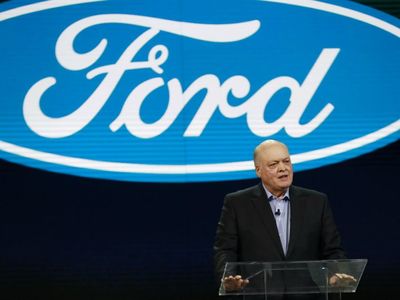Ford Fires 7000 Employees
 |
But First Snide's Remarks: Maybe if Ford would just concentrate on building vehicles people want to buy they would not have to screw up the lives of employees
SEE ALSO: Ford Invests $500 Million In Rivian For Strategic Partnership With Startup Electric Platform Designer
SEE ALSO: Ford Buys Scooter Company
SEE ALSO: Ford Expands Into Bike Rental (Yeah THAT Ford)
SEE ALSO: Same Old Same Old (Published 2002)Ford: Production Cuts Key to Survival
SEE ALSO: Ford Invests $65 Million In Chariot and Closes It
SEE ALSO Ford Content Archive 1995-Present
Ford is cutting 7,000 white-collar jobs, or about 10% of its salaried staff worldwide, as part of a cost-cutting effort it says will save the company about $600 million a year.
Ford says workers will begin to be notified of cuts starting Tuesday, and the terminations will be completed by the end of August. About 2,400 of the jobs cuts are in North America, and 1,500 of the positions will be eliminated through a voluntary buyout offer.
Ford CEO Jim Hackett’s Letter to Employees:
To: All CDS IDs From: Jim Hackett Subject: Smart Redesign Update Team, As we enter the final weeks of Smart Redesign in North America, I want to update you on our overall progress. But first, I want to thank you for your focus and dedication.
We set out on a journey several months ago to redesign our organization and the way we work, and over this time, more than 1,000 Ford team members worldwide have dedicated themselves to this effort while also running the business. The business imperatives behind Smart Redesign were compelling.
To succeed in our competitive industry, and position Ford to win in a fast-changing future, we must reduce bureaucracy, empower managers, speed decision making, focus on the most valuable work, and cut costs. This required intensive work across multiple layers of our company.
Despite the challenges, many participants told us the organizational design workshops were very impactful in helping them shape their organizations and their own roles as leaders.
We are now entering the final phase of Smart Redesign.
Notifications to employees in North America affected by wave four of Smart Redesign will begin tomorrow. The majority will be completed by May 24. Our Smart Redesign and restructuring work continues in Europe, China, South America and International Markets Group. We expect to complete the process in those markets by the end of August.
The time and effort from so many of our team members is helping to make us a stronger company, well positioned for the future. To share some results, when Smart Redesign is complete: More than 80 percent of our managers will have healthy spans of control of six or more direct reports, up from 35 percent before Smart Redesign; Our average span of control for managers will have increased from five direct reports to more than seven, reducing management bureaucracy by one third; By year-end, most of the organization will be structured with nine layers or less, resulting in a flatter and more agile team. At the beginning of the redesign we had up to 14 organizational layers; We identified more than 5,000 concrete ideas to change the way we work – identifying new initiatives as well as work that was not value added; We created the new Enterprise Product Line Management organization, which will ensure we manage our product lines end-to-end for maximum customer centricity and profitability, as well as our Customer Experience group.
We also created the International Markets Group, to focus on the customer and ensure these markets receive the attention they need to thrive and grow; Each skill team fundamentally redesigned their work. For example, Product Development created a new vehicle architecture and testing team, a new systems engineering and design assurance group, and expanded future investments for in-vehicle infotainment, software, electrification, and other areas.
Clearly, cost reduction is a key aspect of Smart Redesign. Overall, by the end of the process later in August, we will have eliminated about 7,000 salaried positions or about 10% of our global salaried workforce. This includes both voluntary and involuntary separations over the past year.
Within that total, and consistent with our goal to reduce bureaucracy, we will have reduced management structure by close to 20%. This will result in annual savings of about $600 million. We also made significant progress in eliminating bureaucracy, speeding up decision making and driving empowerment as part of this redesign.
These are key opportunity areas cited by all of you as part of our annual PULSE survey.
Ford is a family company and saying goodbye to colleagues is difficult and emotional. We have moved away from past practices in some regions where team members who were separated had to leave immediately with their belongings, instead giving people the choice to stay for a few days to wrap up and say goodbye.
We also have a range of resources and services in place to support employees in managing this transition. I hope that you take a moment to thank them personally for their service and commitment to Ford.
Even as we conclude Smart Redesign, we still have a lot of work to do in the coming months. We will continue to work collaboratively and respectfully with our teams and other partners to ensure our designs are effective and fit and that our employees are treated fairly and with respect.
I remain in awe of the skill and dedication of the Ford team around the world, and more excited than ever about what we can accomplish together. I hope you can feel the momentum building as we work together transforming Ford into the world’s most trusted company, designing smart vehicles for a smart world.
Thanks for all you do for Ford.
Thanks



